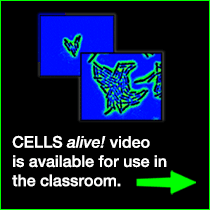The "Peeping Tom of Delft"*
When a ball of molten glass is inflated like a balloon, a small droplet of the hot fluid collects at the very bottom the bubble. *Antonie van Leeuwenhoek used these droplets as microscope lenses to view the animalcules he found in water. Despite their crude nature, those early lenses enabled van Leeuwenhoek to describe an amazing world of microscopic life. Since his day, many methods have been devised to enhance the ability to see cells and their organelles. Enhancements have been accomplished by creative microscope lens design or manipulation of the microscope's light path (Optical Enhancement). The most recent improvements come from manipulation of the raw microscope image by electronic means (Electronic/Digtal Enhancement).
Optical Enhancement
There are some inexpensive - yet very effective - optical enhancements that dramatically alter the image of a simple brightfield microscope. These include Darkfield, Rheinberg, and Polarized Illumination. (Shown to the right is the green alga Micrasterias.) Microscopes used in biological research add further enhanced features - not as inexpensive - but often elegant and extremely useful. These include Phase Contrast, DIC, and Fluorescence.
Electronic Enhancement
In the past 20 years, video has played an increasingly prominent role in the improvement of biological microscopy. Even a poorly-lit image with very low contrast can be drastically enhanced by adjustments in video brightness and contrast. The newest cameras used in research have even greater control over apparent resolution of the final image as illustrated in Electronic Enhancement.

